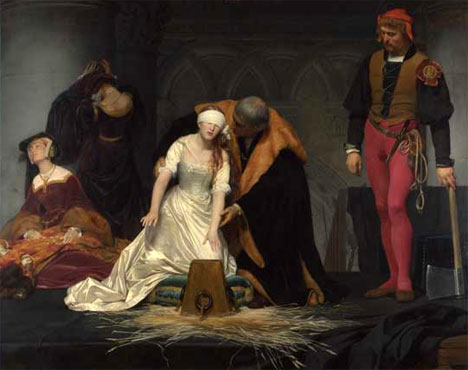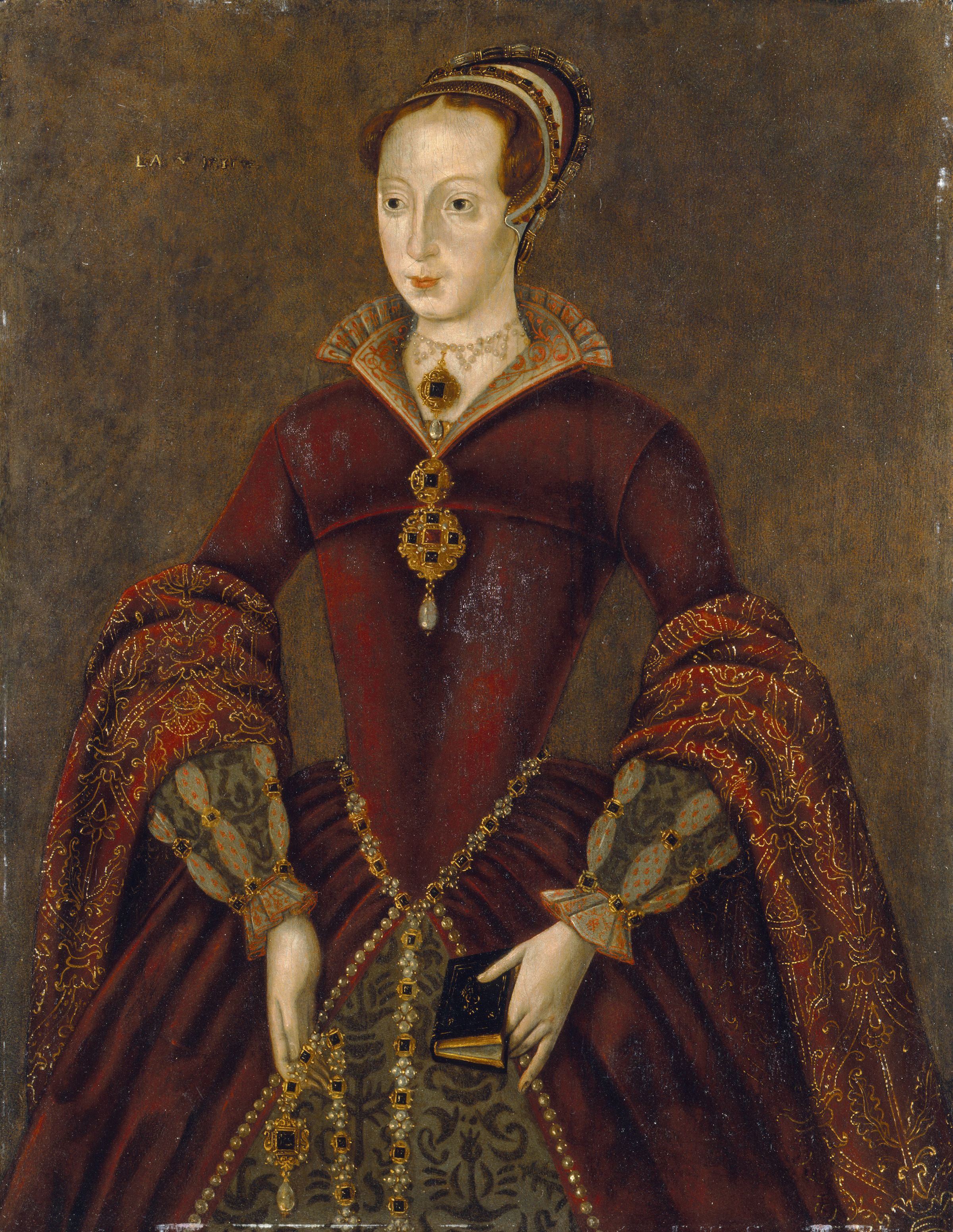
Above: Paul Delaroche's The Execution of Lady Jane Grey (1833).
I recently finished reading Professor Eric Ives' Lady Jane Grey: A Tudor Mystery (2011), and in the final chapter Ives describes the cultural presentation of England's thirteen-day queen in literature, film, art, and plays since her untimely death in 1554. As Ives notes, Lady Jane Grey ceased to exist as a person, but instead became a construct, to be manipulated and utilised by individuals to suit their own ends, reflecting the political, social and cultural contexts in which they lived. As a result, the portrayal of Jane in the Elizabethan period differed greatly to that offered by the Victorians, which in turn differs to how she is represented today.
A brief history of Lady Jane's life: Jane was the eldest daughter of Henry Grey, marquis of Dorset (1517-1554), and his wife Frances Brandon (1517-1559), who in turn was the eldest daughter of Mary Tudor, younger sister of Henry VIII. As such, Jane was the grand-niece of Henry VIII. She was likely born in the spring of 1537 at Bradgate in Leicestershire, and she had two younger sisters, Katherine (born 1540) and Mary (born 1545). Her education was, famously, renowned; she was a talented linguist, a cultivated humanist and, above all, a devout Protestant. Her childhood was spent in the household of the queen dowager Katherine Parr, last consort of Henry VIII, where she was educated alongside Princess Elizabeth Tudor. Jane, despite her prominent position as a descendant of the first Tudor king, Henry VII, was quite obscure, and it was only in the summer of 1553, aged sixteen, that she became well-known in the kingdom at large.
Edward VI, aware that he was dying in 1553, masterminded the 'deuise for the succession' in which he barred both his half-sisters Mary (daughter of Katherine of Aragon) and Elizabeth (daughter of Anne Boleyn) from inheriting the English crown, by virtue of their status as bastards. As such, he designated the crown to pass to the heirs of Henry's younger sister Mary Tudor, meaning Lady Jane Grey and any sons she bore with her husband Guildford Dudley. When the king died in July 1553, Jane was proclaimed queen of England. However, she was defeated by Mary Tudor, the dead king's eldest half-sister. Imprisoned in the Tower of London, Jane was tried and found guilty of high treason alongside her husband, her father-in-law, her brothers-in-law and Archbishop Cranmer of Canterbury. In February 1554, following the failure of Wyatt's Rebellion, she was executed on Tower Green, some months shy of her seventeenth birthday.
From the moment of her death, Jane became an enigma, to be manipulated and represented in a manner of ways by artists, writers, playwrights and film-makers. The late sixteenth century celebrated her as a Protestant martyr, who had died for her faith in the cruelty of the Catholic Mary Tudor's reign. A continuing theme which developed in the Victorian age saw the celebration of Jane's virtues, and she was viewed as the embodiment of goodness and godliness, an example to Christian children in both Britain and the USA.

Jane the scholar was a prominent theme in many works. Again, she was used as an example to the young to work hard at their studies. Jane's formidable academic achievements were continually highlighted and celebrated, viewed as something to look up to and work towards.
Above all however, perhaps, the portrayal of Jane Grey which most people understand is that of Jane the victim. Beheaded at only sixteen, in the flower of her youth, Delaroche's 1833 painting (at the top, above) conveys a sense of a youthful girl, mercilessly killed for crimes she has not committed, an 'innocent traitor' (the title of Alison Weir's 2006 novel). Again, she stood in contrast to the cruelty and brutality of Mary Tudor, their different faiths meaning that they stood poles apart. Jane was viewed as a victim of corrupt and scheming men, including members of her family, who ruthlessly desired to attain greater power for themselves. Although Delaroche's painting was inaccurate in many respects (the costume, the setting, for example), it is an extremely famous portrayal of the thirteen-days queen and the brutality of her death.

Above: Helena Bonham Carter as Jane in the 1985 film Lady Jane.
If early modernists celebrated Jane as a Protestant martyr, and the Victorians viewed her as a manipulated and bullied child who, nonetheless, was the epitome of virtue, then it seems credible to suggest that Jane has been represented as a defiant, opinionated and stubborn young woman in the twentieth- and twenty-first centuries. The 1985 film Lady Jane, starring Helena Bonham Carter, emphasised Jane's commitment to Protestantism but also portrayed her in a more sensual manner through focusing on her marriage to Guildford Dudley. Historians, however, have been quick to point out Jane's stubborn and determined qualities - in Ives' view she was a woman of 'fierce personal integrity'.
Because of her young age at death, and because of the obscurity of much of her life, we know very little about Lady Jane Grey as a person. She is an enigma. Consequently, when discussing her, we focus on Lady Jane the construct, what she embodies for us, how she is represented in our own times - and before. It might be worth considering how she will be represented and manipulated in different mediums in the future.
No comments:
Post a Comment